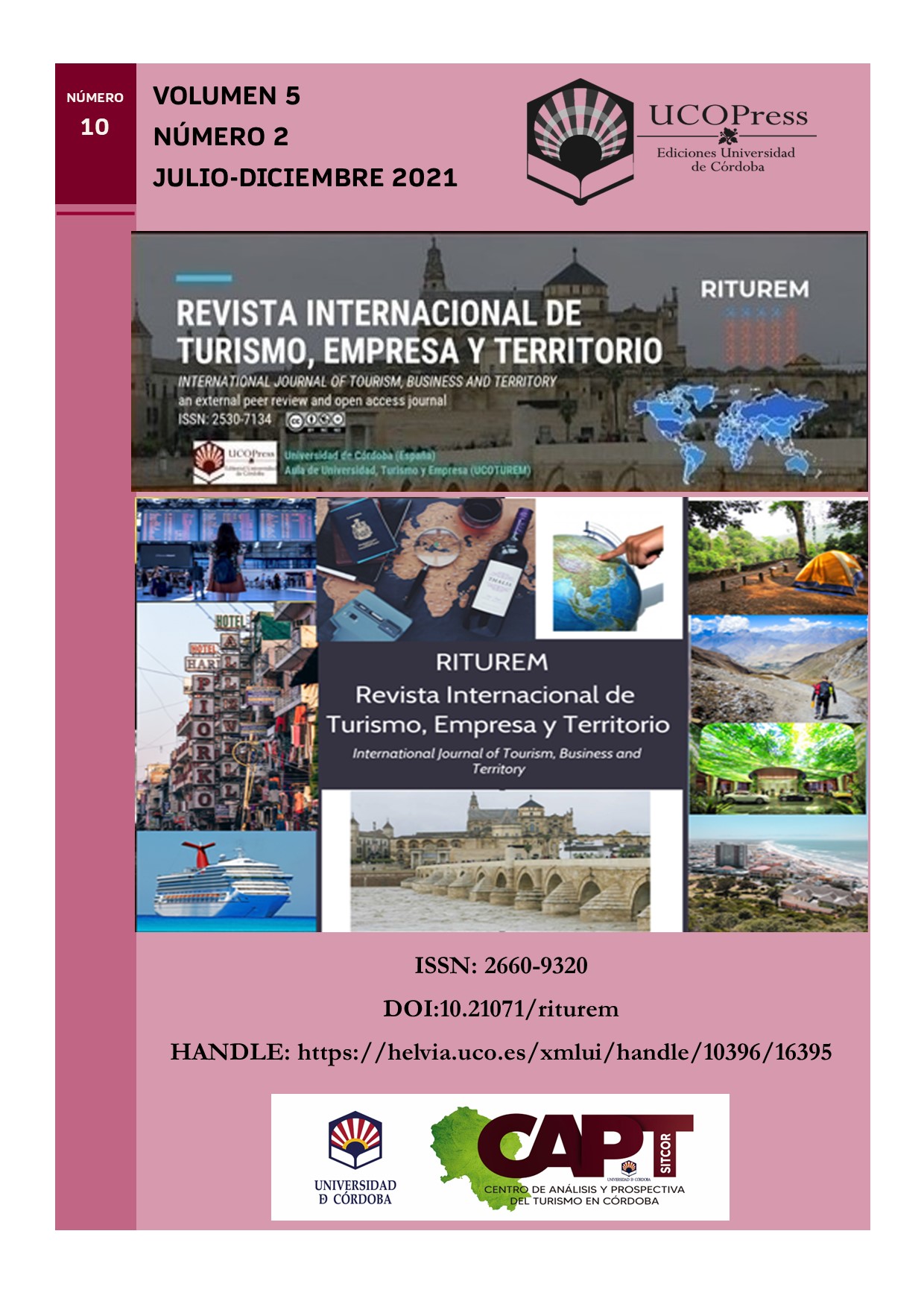The eno-gastronomic tradition and tourism: the case of furanchos (Galicia, Spain)
Main Article Content
Abstract
Food tourism is a type of tourism that is generating more and more interest as part of the tourism portfolio of destinations and also as a motivation factor among visitors. This paper analyses ‘furanchos’, traditional gastronomic establishments in Galicia, and studies their relationship with tourism from the supply perspective in order to observe how and why they are a tourism attraction and what is the experience they offer to the visitors. To achieve the objective, a qualitative study was designed and ten interviews were carried out with owners of ‘furanchos’ in the Galician province of Pontevedra. Results confirm that furanchos are a resource which shows to visitors the regional cuisine and the rural tradition from an authentic experience. The study analyzes ‘furanchos’ as an example of Galician identity and contributes to the understanding of the role of culinary heritage in the management and promotion of food tourism in rural areas. Future articles should also analyze the demand perspective.
Keywords: rural development; Galicia; food heritage; food tourism.
Downloads
Article Details
Copyright Notices Proposed by Creative Commons
Proposed policy for journals offering deferred open access
Those authors who have publications with this journal, accept the following terms:
1. The authors will retain their copyright and guarantee to the journal the right of first publication of their work, which will be simultaneously subject to the Creative Commons Recognition License CC BY-NC 4.0 (Creative Commons — Attribution-NonCommercial 4.0 International — CC BY-NC 4.0 ) hird parties to share the work provided that its author and its first publication is indicated this journal and no commercial use is made.
2. Authors may adopt other non-exclusive licensing agreements for the distribution of the published version of the work (e.g., deposit it in an institutional telematics file or publish it in a monographic volume) provided that the initial publication is indicated in this journal.
3. Authors are allowed and recommended to disseminate their work over the Internet (e.g. in institutional telematics files or on their website) before and during the submission process, which can produce interesting exchanges and increase citations of the published work. (See The effect of open access: http://opcit.eprints.org/oacitation-biblio.html.
